Painting landscapes with a TLR camera from the 1950s has become the main activity in recent months. No wonder, as it seems that I need a photographic project related to the landscape genre at least once a year. In 2020, I presented you a series of black-and-white images of agricultural sceneries. Then, in 2021, I came up with some long-time exposures of the same topic. And this time, it is my much appreciated Rolleiflex that let me discover the rural space again.
In this post, I’m going to talk about a variety of subject matters – how I got inspired by Dutch landscape painters from the 17th century, the joy of using my Rolleiflex and why I like expired films. Therefore, I came up with the title “painting landscapes”. So please lean back and expect a bunch of images to look at!
Traveling back to the Dutch Golden Age
As usual with me dipping into landscape photography, the works of (ancient) predecessors arise my interest. Whereas last year I peeked a bit into the impressionists’ approach and their way to depict light, I now went further back in history – to the Dutch Golden Age.
The Dutch Golden Age took place in the 17th century, when the Netherlands led Europe in terms of trade, science and culture. Dutch painters were very prolific at that time, creating over 1.3 million artworks during the span from 1640 to 1660 alone! Landscapes and cityscapes ranked among the major genres, though they were less regarded than history paintings or portraits. In this hierarchy, still lifes formed the lowest category.
In particular, I am fascinated by the works of Jacob van Ruisdael (1629–1682), Paulus Potter (1625–1654) and Gerrit Berckheyde (1638–1698). Van Ruisdael created a variety of scenes with different landscape “features” – windmills, castles, dunes, oaktrees. I especially like the way van Ruisdael painted his skies, often with dramatic cloud formations. Potter, however, specialized in animals typically found in Dutch landscapes, like cows and horses. To me, Potter’s creatures always appear heroic – as if the painter had told them to pose “naturally but in an idealistic way”. Finally Berckheyde: I admire his detailed and well-proportioned cityscapes. It’s like looking at architectural photography from 350 years ago. I don’t know exactly why, but almost all of these landscape paintings evoke a strong melancholy in me.
Other notable contemporaries are Jan Vermeer (Girl with a Pearl Earring, The Milkmaid) and – of course – Rembrandt van Rijn (The Night Watch). If you are interested to see more art works of this period, check out the Rijksstudio, an online gallery of the renowned Rijksmuseum in Amsterdam (free of charge, registration necessary). Needless to say, you can also just browse Wikipedia.
Some Inspiring Landscape Paintings
All members of the Dutch Golden Age passed away quite a long time ago. Therefore, their works – and reproductions of these – now fall into public domain. Fortunately for me, as I can legally show you some of my favorite paintings here.
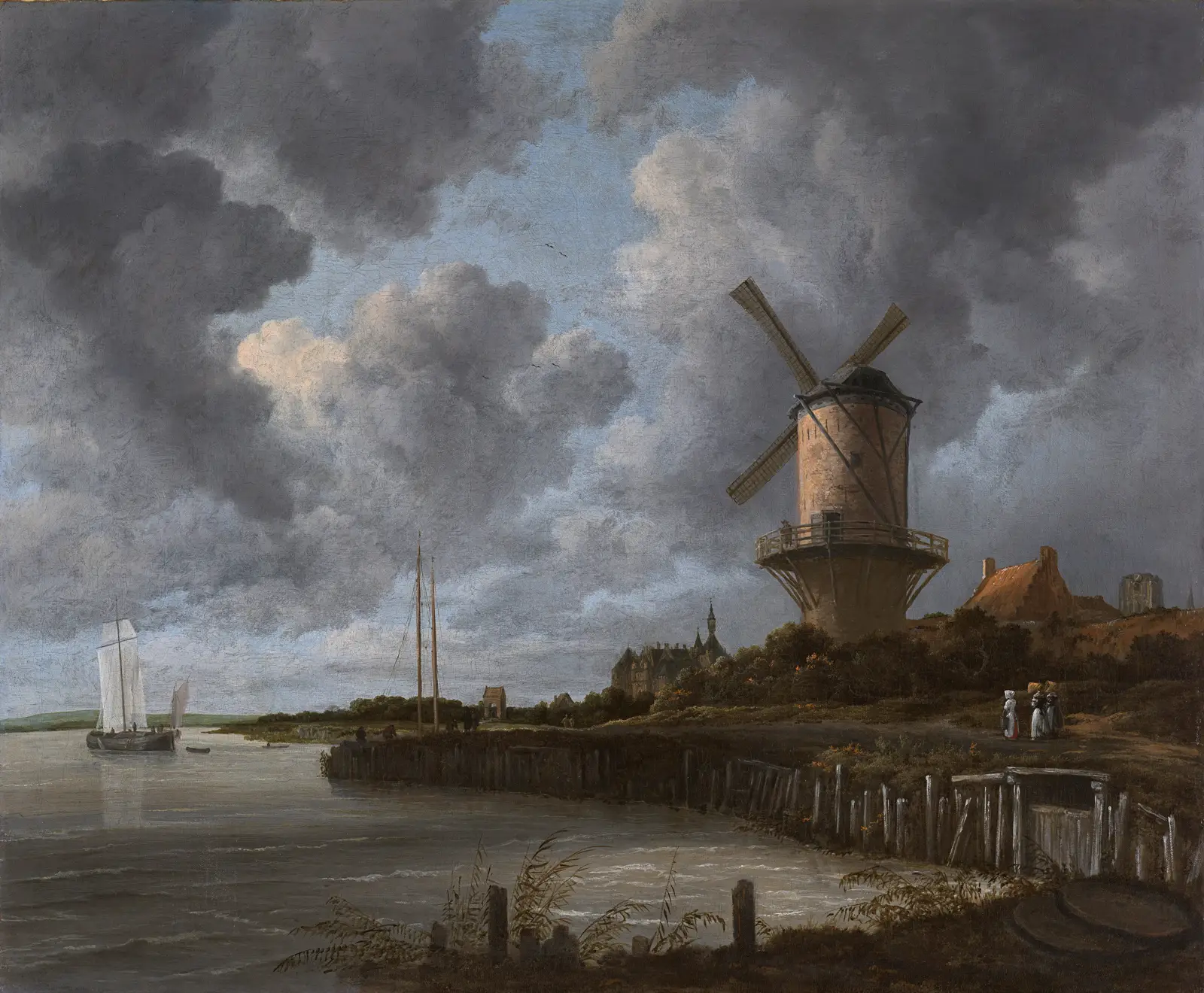
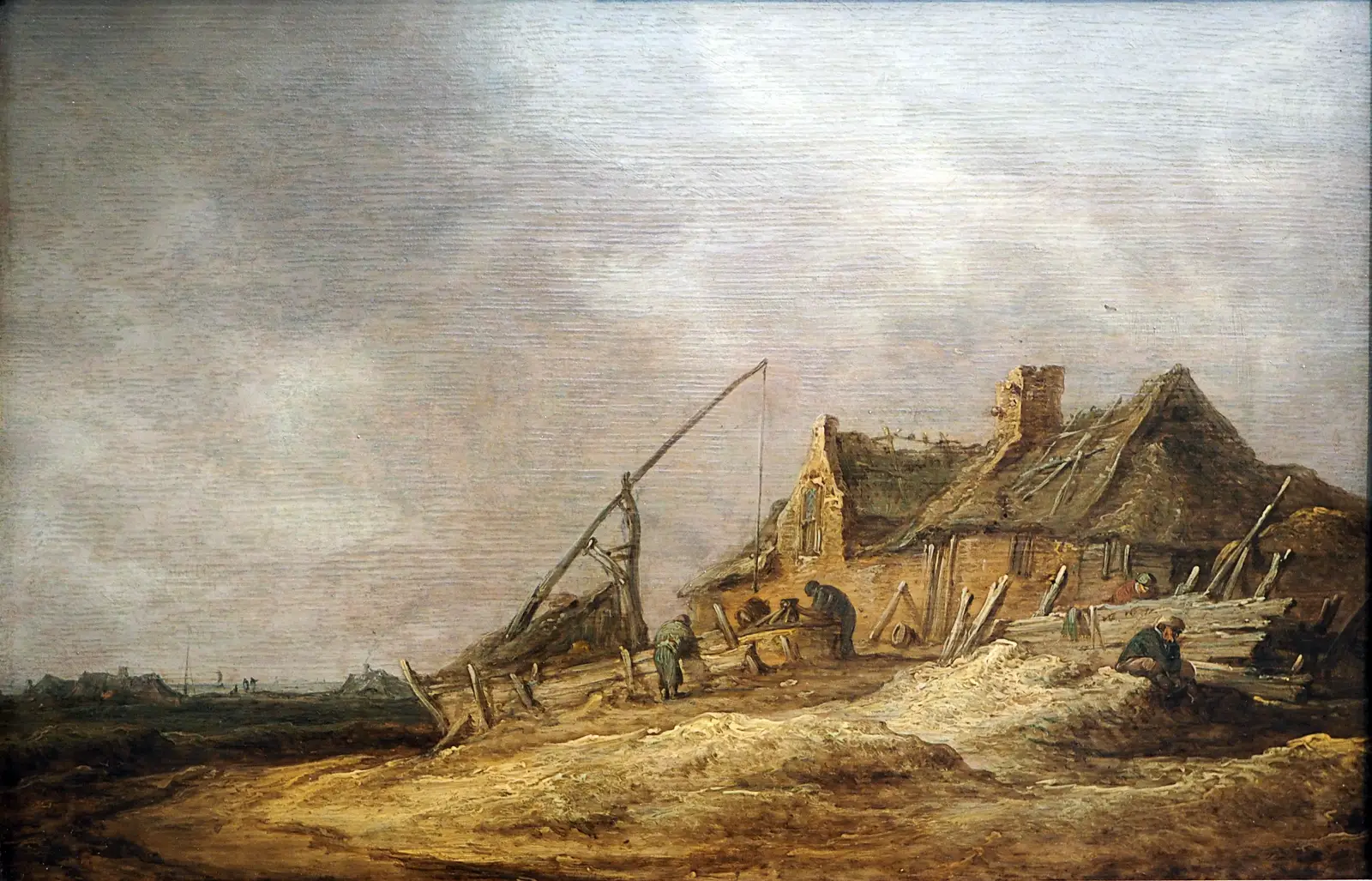
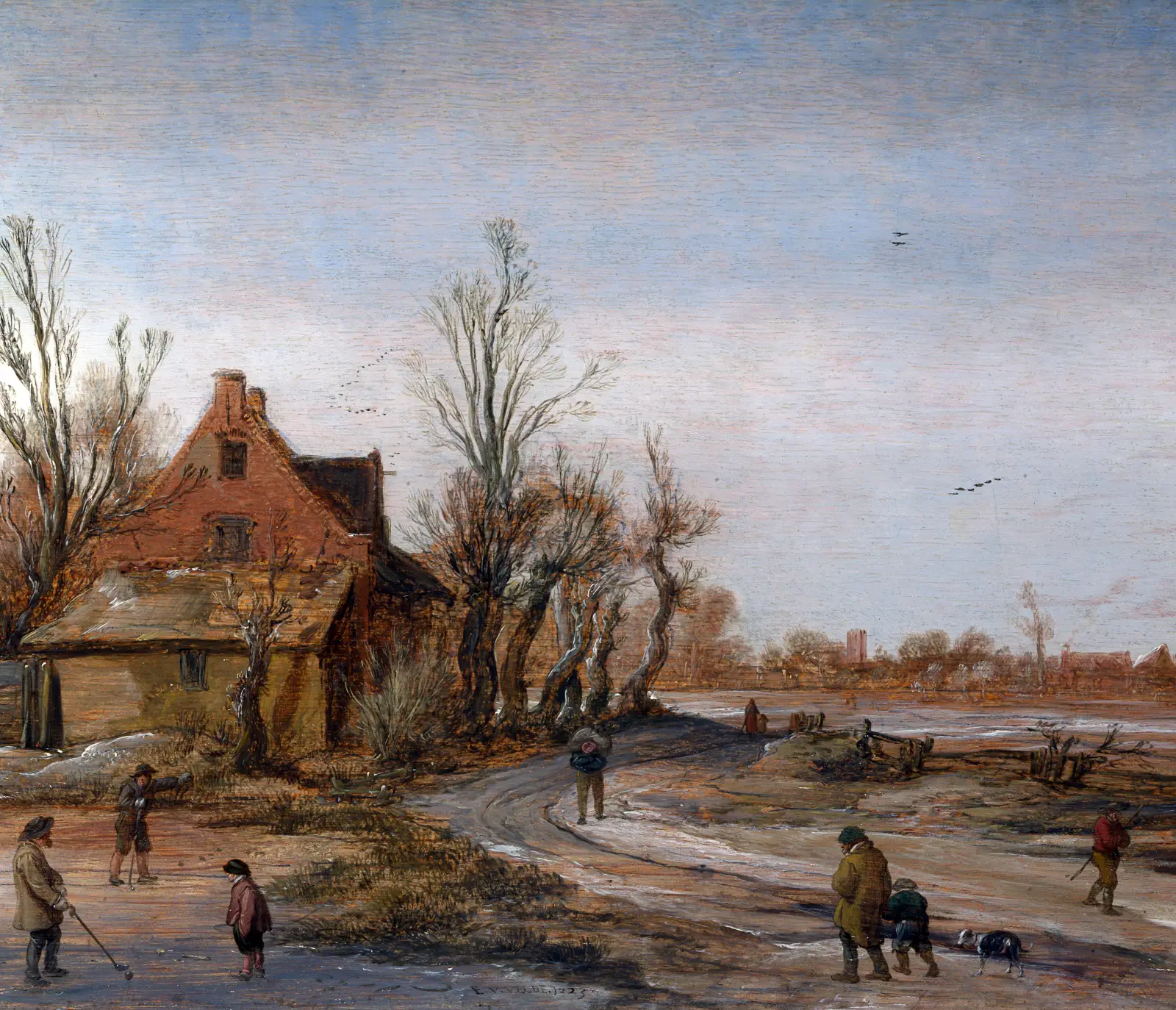
Gaining Motivation from the Old Masters of Landscape Painting
It’s not my intention to copy the Old Masters or to mimic their style. The Dutch artists usually present broader views or even distant vistas. Painting landscapes meant for them to arrange buildings, trees, roads and other scenic features in a way they form a comprehensive composition. In contrast, my photographs often show just a single object, sometimes only a part of it. And whereas I exclude people from my photographs, the Old Masters seem to garnish their landscapes with many of them, illustrating everyday life.
There is also a fundamental difference in the way painters and photographers work: Painters add, photographers subtract. What does that mean? A painter will only add the things to the canvas that support her or his vision and that convey the intended message. Therefore, a painter can create an idealized landscape. She or he can also combine features on the canvas that aren’t adjacent to each other in the real world (as mentioned above) – for instance, a river course in the foreground and a castle on top of a mountain in the back. In contrast, photographers have to work with the scene they encounter. She or he has to carefully compose it and exclude all the objects from the frame that distract and weaken the message.
With the use of (rather) fast lenses, photography allows us to separate objects from their surroundings. A shallow depth of field can greatly help to emphasize our message – and please us with a nice bokeh. In the 17th century, things such as fast prime lenses didn’t exist. So the landscapists painted the world as our eye perceives it: sharp from front near and far. As a result, photography offers me an additional technique the old masters didn’t have back then.
Some More Inspiring Landscape Paintings
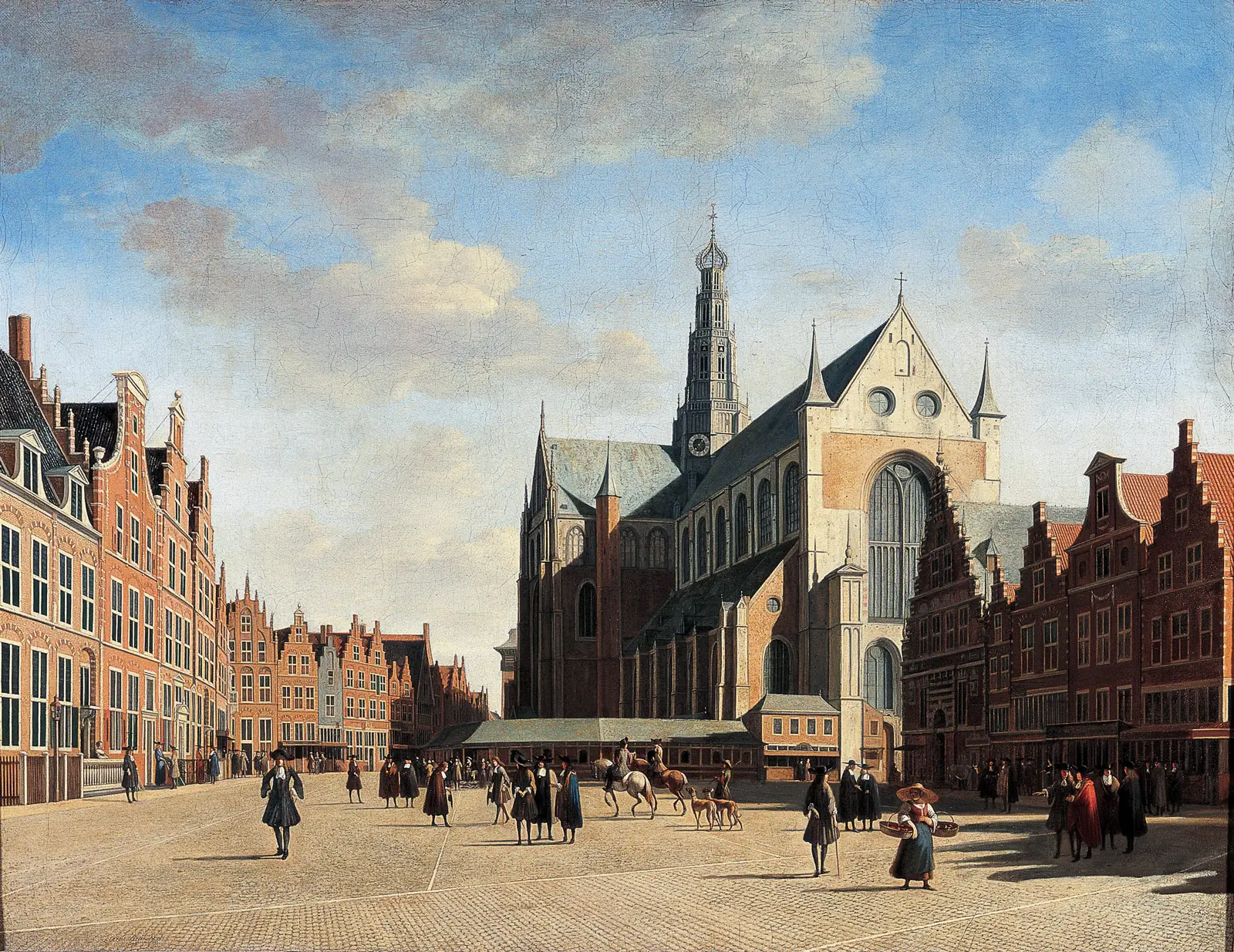
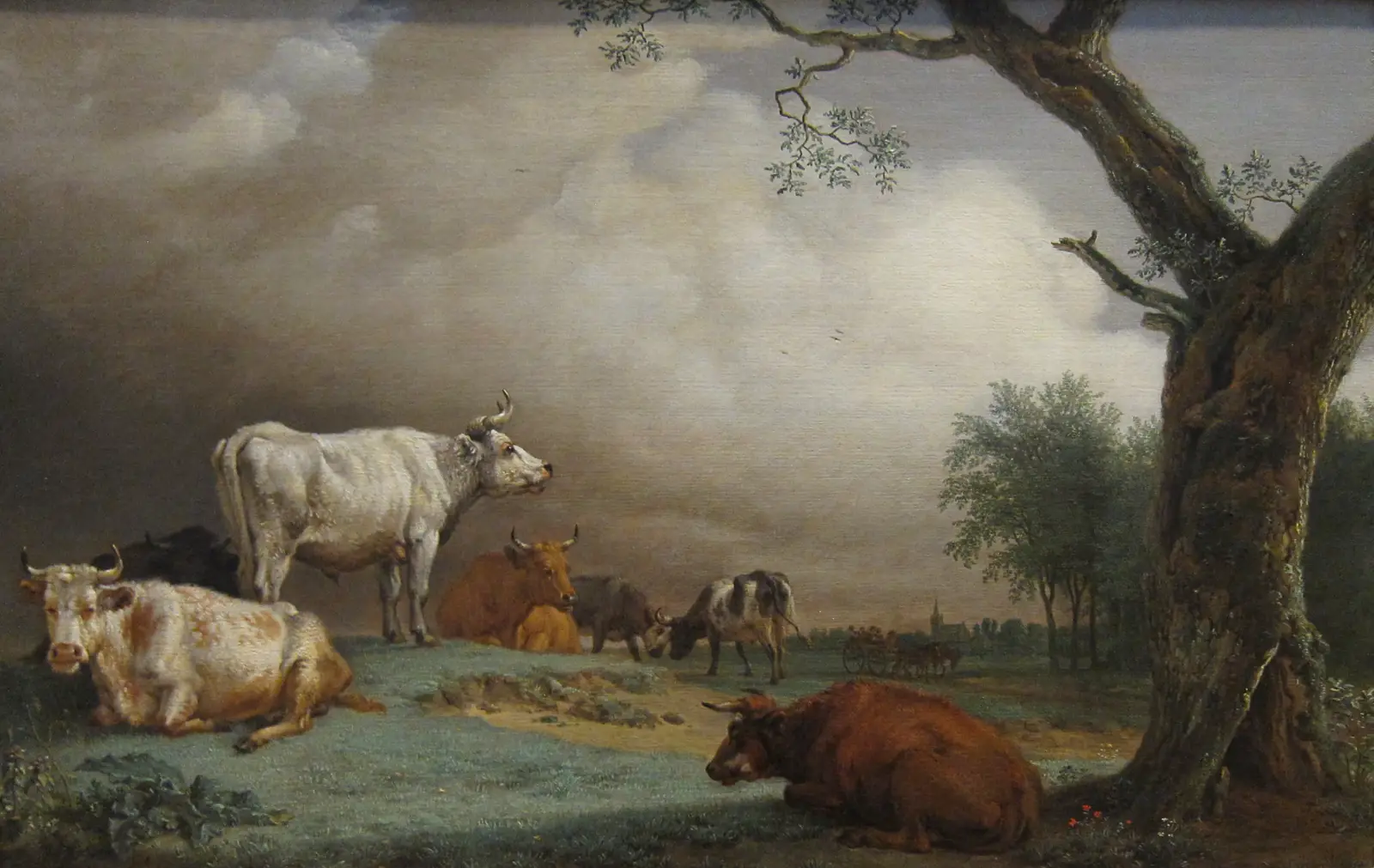
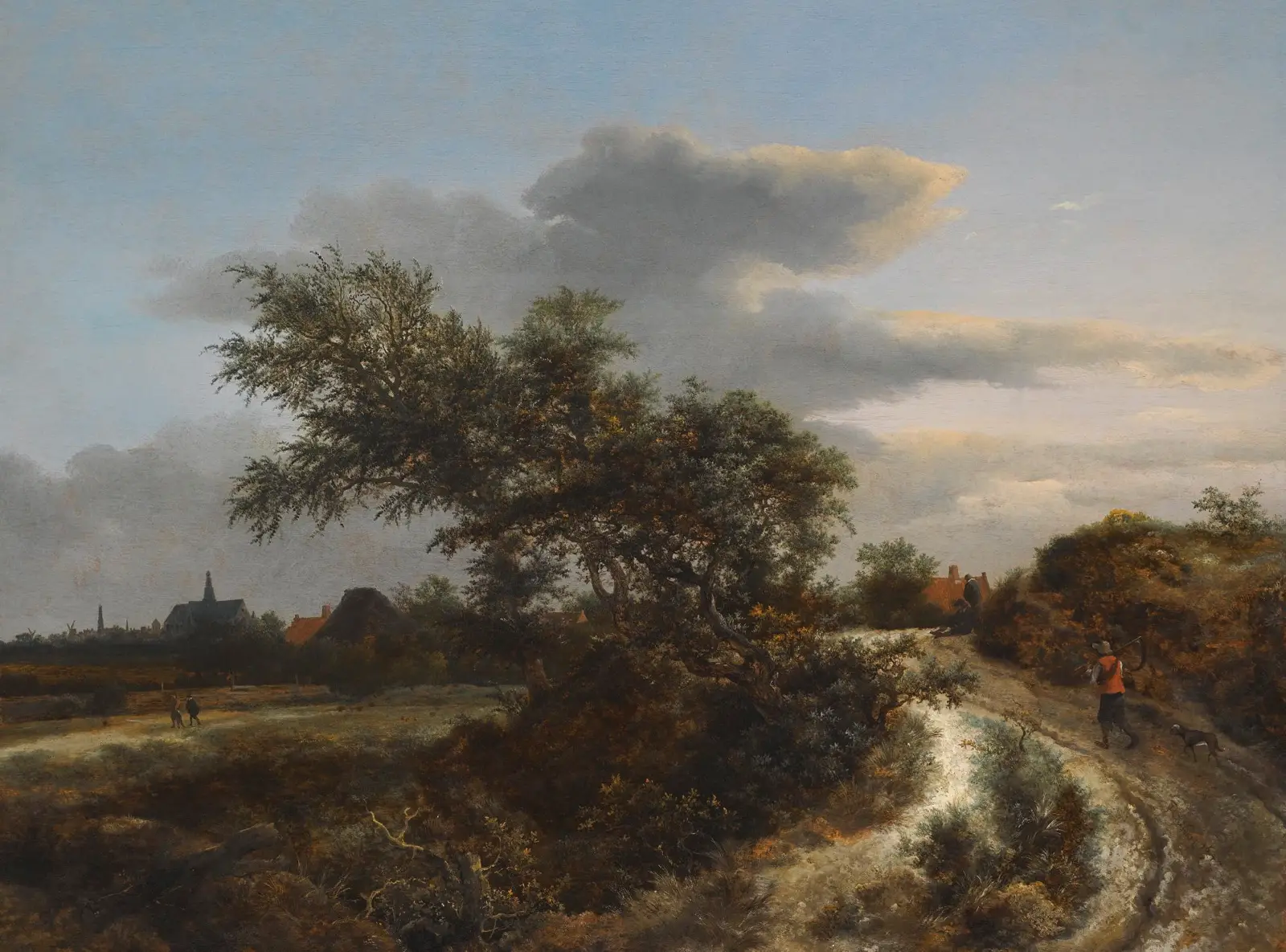
Out in the Field
My usual approach consists of searching for features within a landscape. With features I mean in principle every object that catches my eye. These can either be natural ones such as a lonely bush on a meadow, a tree trunk and the texture of its bark or grazing cattle. Or they are man-made: farmhouses, fence posts or – always, always appreciated – stacks of straw bales.
Since I rely on a bike for my trips, my range is more or less restricted. Only on rare occasions do I discover actually new places; most places are already familiar to me. It’s like I have built a visual library in my head: to get a decrepit barn, I have to cycle: here. And chances to see some horses are high: there. This may not sound overly exciting – and well, it often isn’t. At least different seasons and different weather bring some variety – as a different camera does, too. Maybe this fact connects me a little bit to the Dutch masters, who also lived in a rather confined world (remember: no cars, air planes or motorized ships). For instance, some of the Dutch painted Scandinavian landscapes without ever having visited Scandinavia – they just studied the works of their colleagues who had been able to make such a trip.
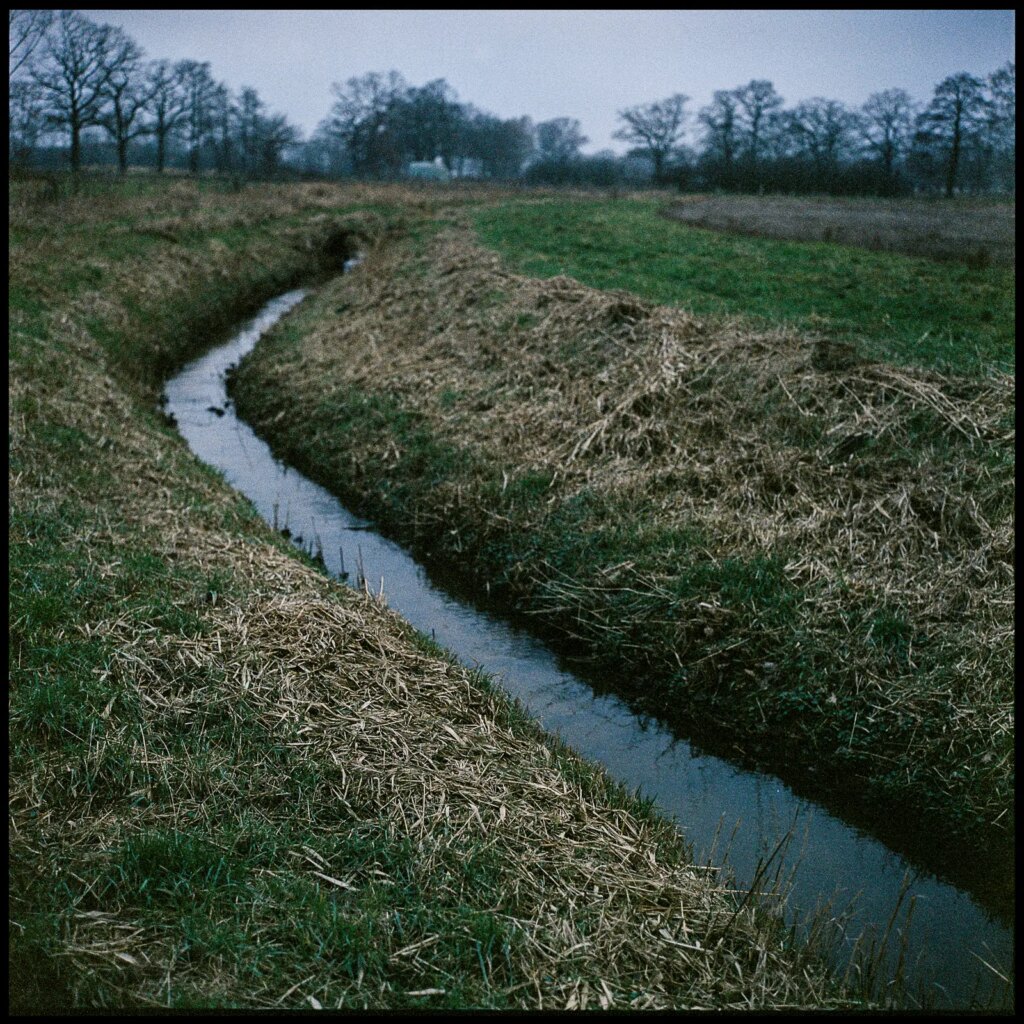
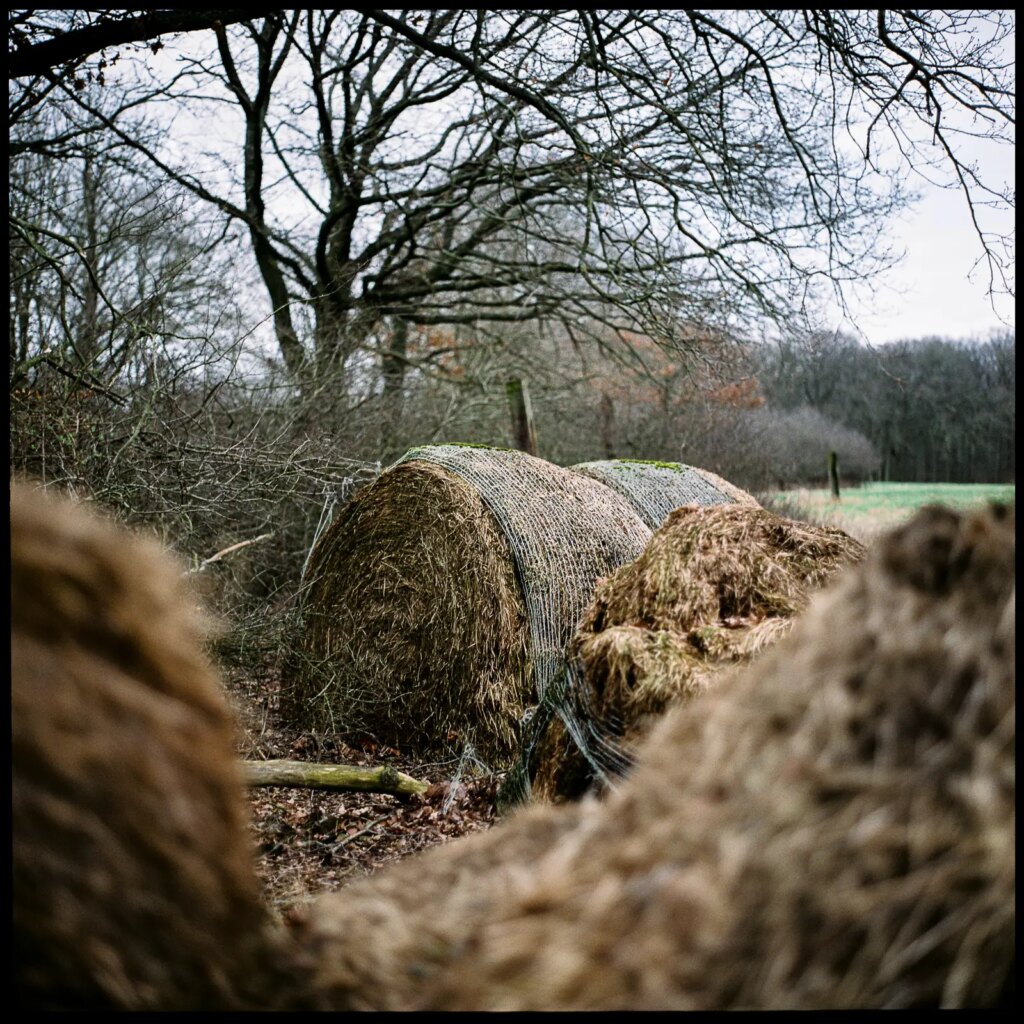
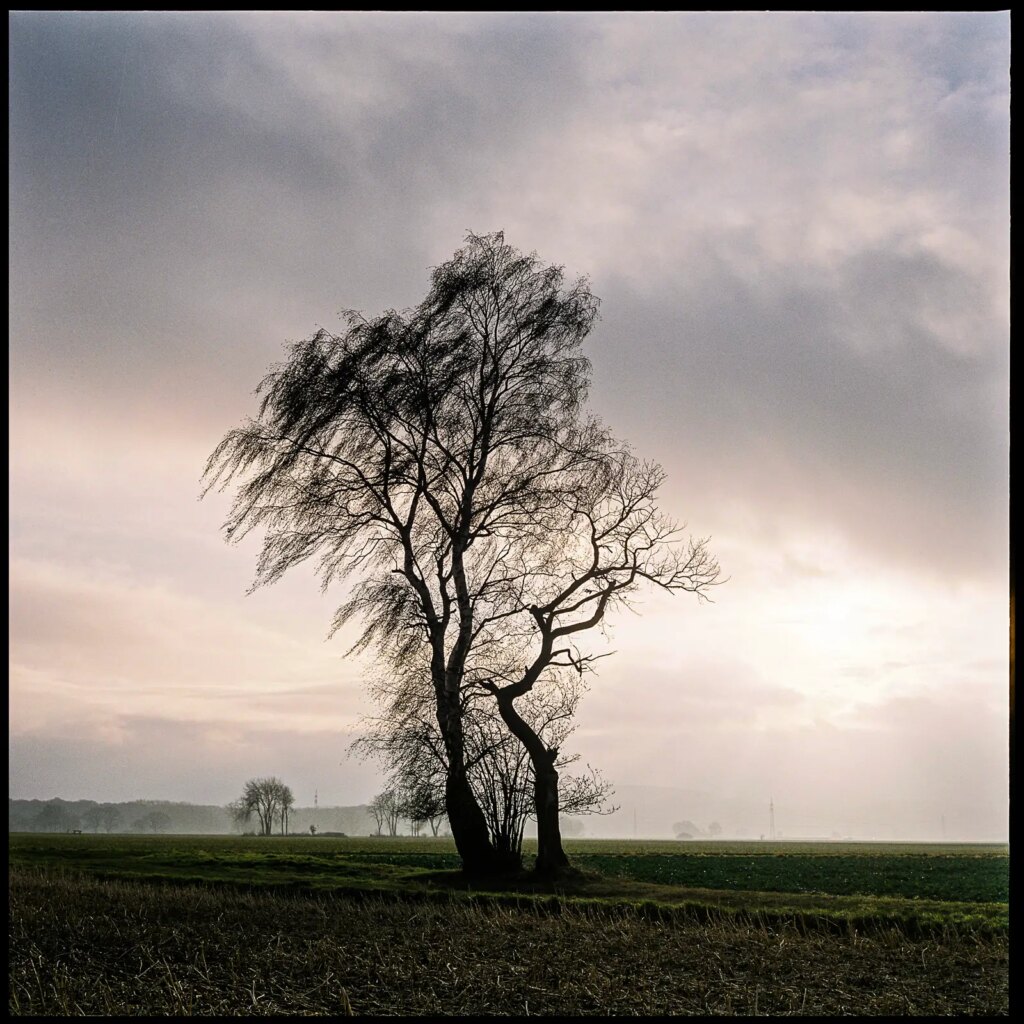
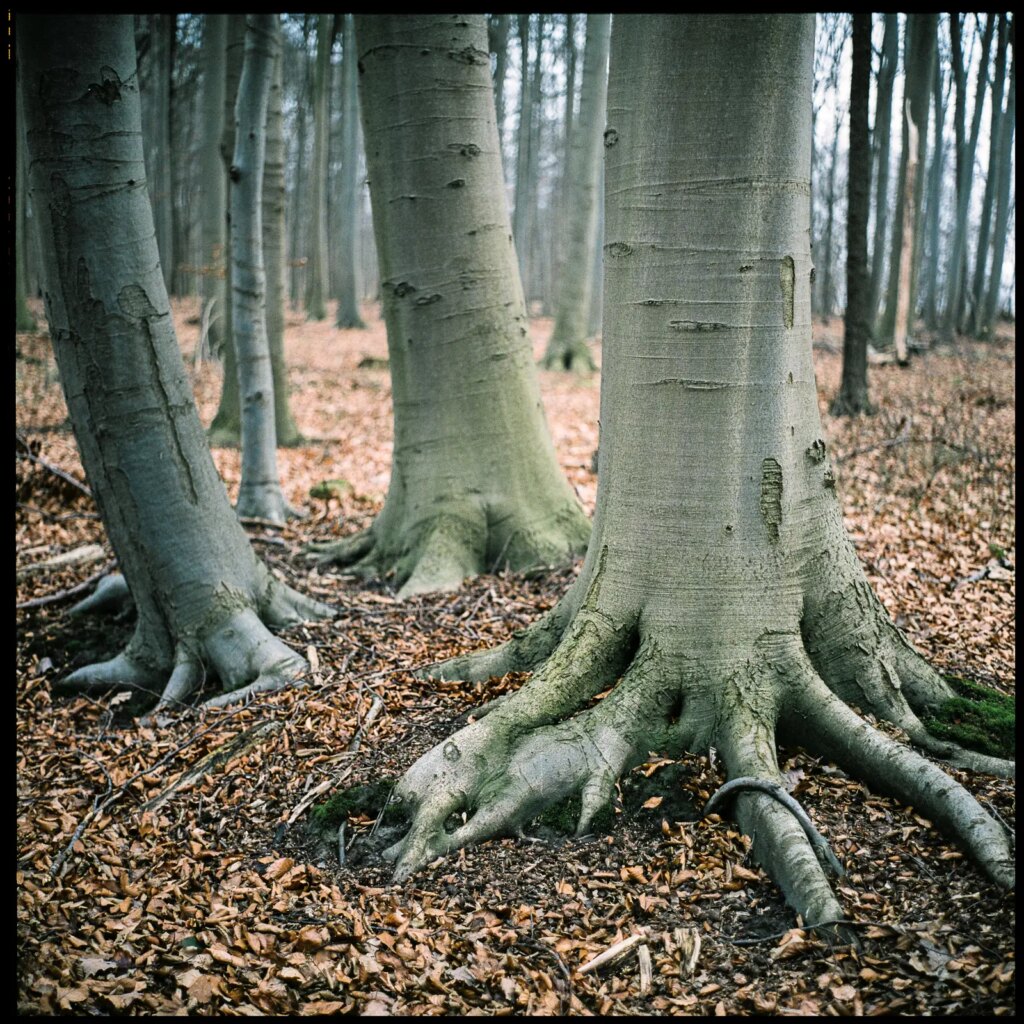
Working with the Rolleiflex
Now it’s time for some technical aspects. Well, well – I know this debate of “gear doesn’t matter” versus “gear actually does matter” or “gear should not matter but does” … however.
The Rolleiflexes waist-level viewfinder considerably adds to the magic: a little window to the world around me. This evokes a different mindset compared to regular eye-level cameras and greatly supports the “painting landscapes approach”. Moreover, the waist-level finder pretty much aids low perspective shots. For me, TLRs are also non-tripod cameras. That makes shooting with it way more casual than with a slow and complex system, though not that snappy as with a point-and-shoot. Finally, the camera feels nice and looks classic – and this motivates me to work with it.
If you are interested in how people use a Rolleiflex way more sophisticatedly than me, head over to Christopher’s article and learn how he takes magnificent panoramic images with this very TLR.
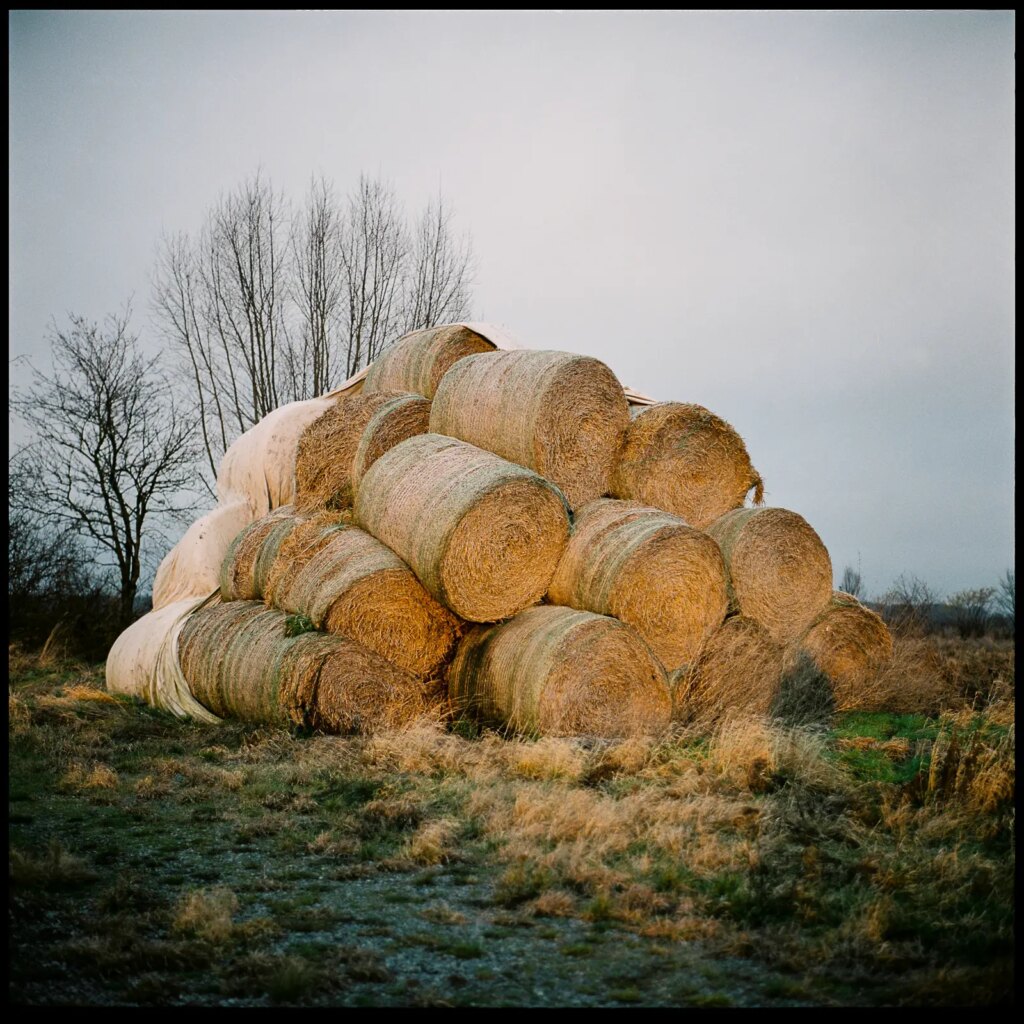
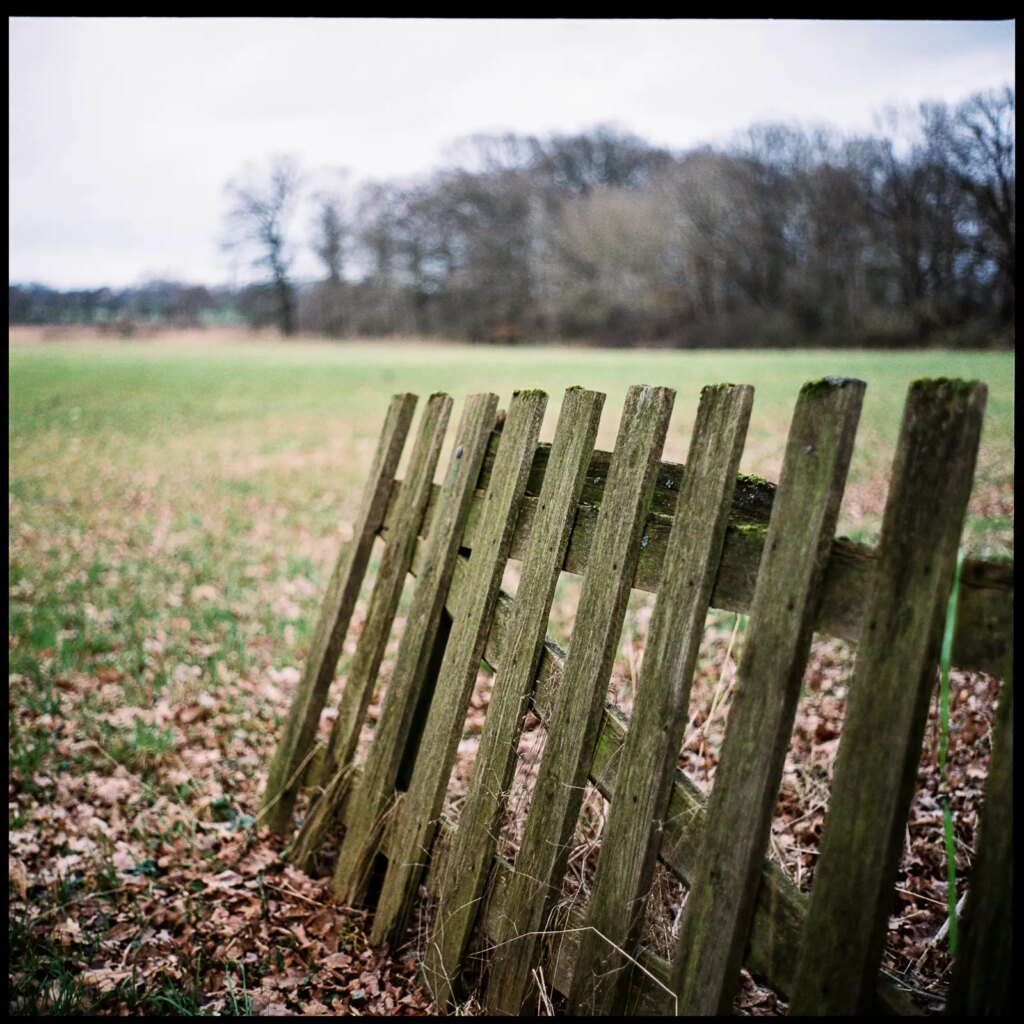
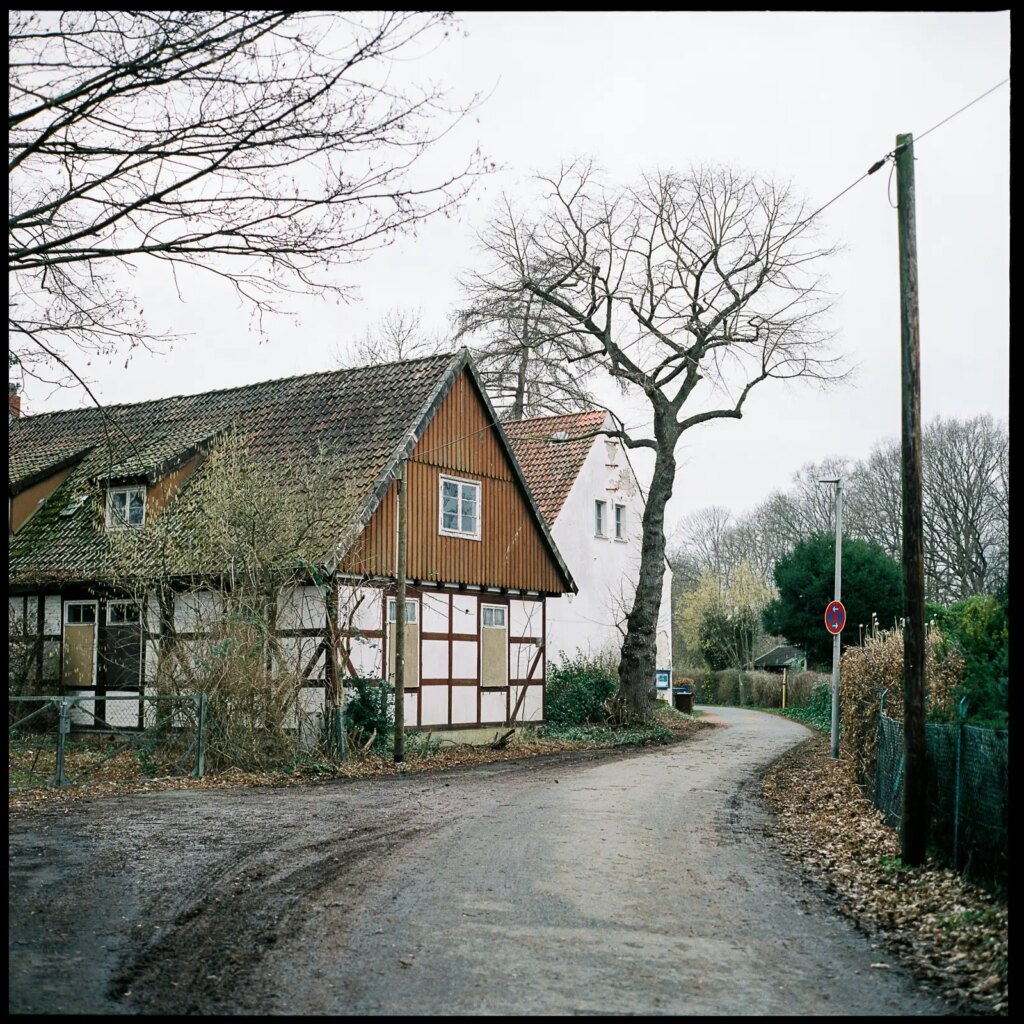
More Expired Film, More Excitement
For my painting landscapes project, I restricted myself to color film. Fuji Pro 400H has become my go-to stock recently; a true workhorse. To spice up my life, I occasionally experimented with expired film – I tried Kodak Portra of different ages and types. In the past, I had some good experiences with it. Pronounced grain and more or less shifted tones can give these images their own intriguing characteristics.
However, you will never be sure what you get. There is a possibility that you end up with images not usable at all. It depends on the conditions under which the films were kept (freezer is better than the fridge is better than room temperature) and the type of material (for instance, high sensitive stocks suffer more from aging effects than their low-ISO counterparts). My strategy to minimize the risk is to buy a small-ish amount of rolls from the same batch: I can use one roll to experiment with and use the remaining rolls accordingly. But even then I will have to act rather carefully. In my experience, the “operational corridor” of expired film is way narrower than of fresh one. You will reach the limits of your material noticeably earlier.
But why use expired film at all? I like variations – buying expired film allows me access to all sorts of materials discontinued long ago. And there is this increased excitement about how my photographs will turn out. Now, after shooting film intensively for six years, I collected a huge amount of images – almost all subjects and situations I ever wanted to. This means, a single image or even a single roll is less important to me than it would have been some years ago. Freed from the pressure to succeed, I can now experiment less worried.
More “Painted Landscapes”
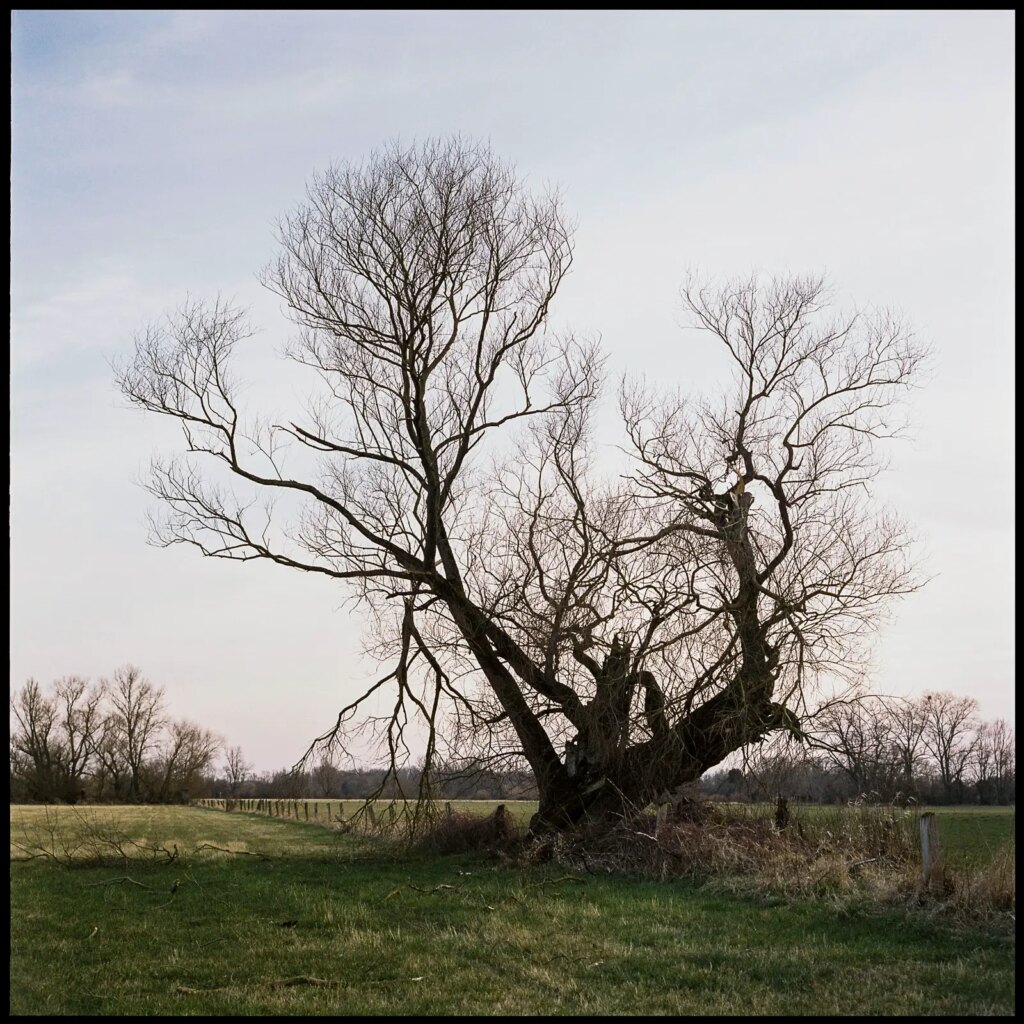
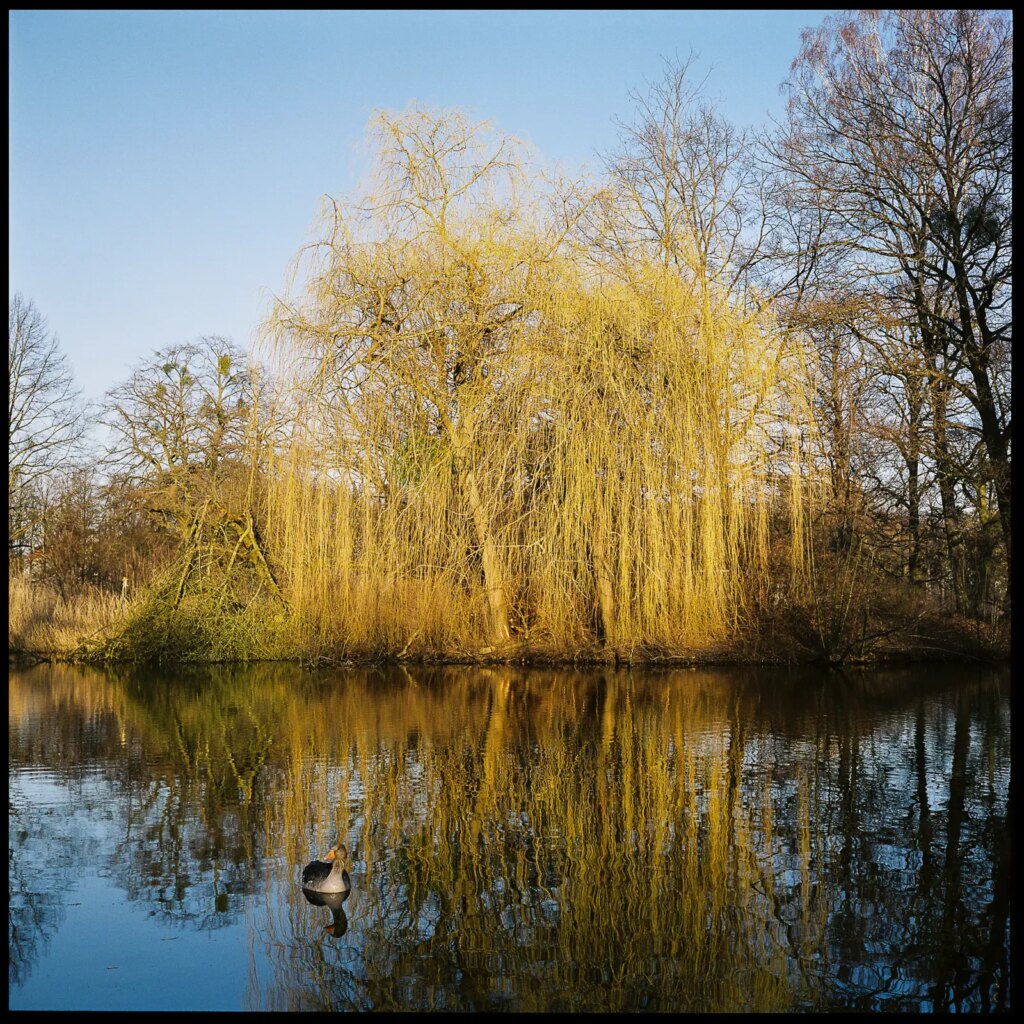
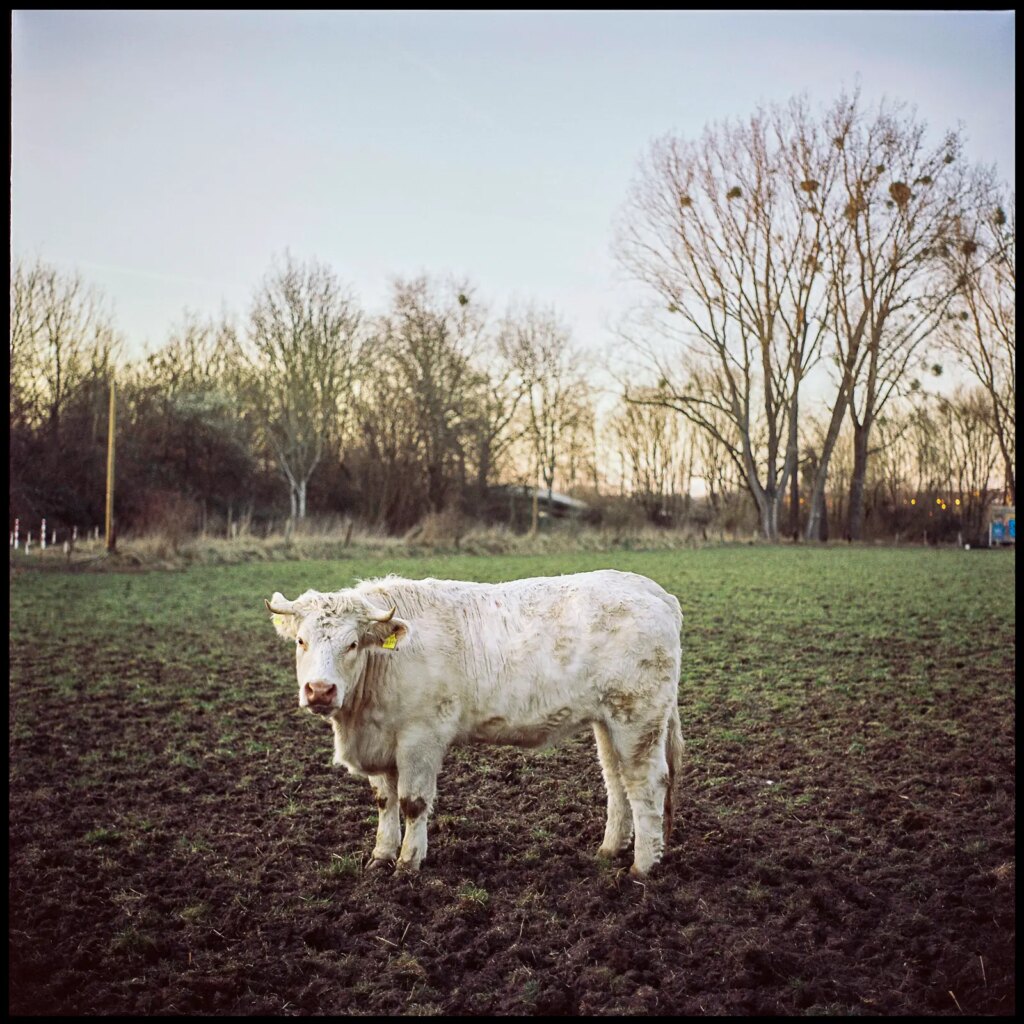
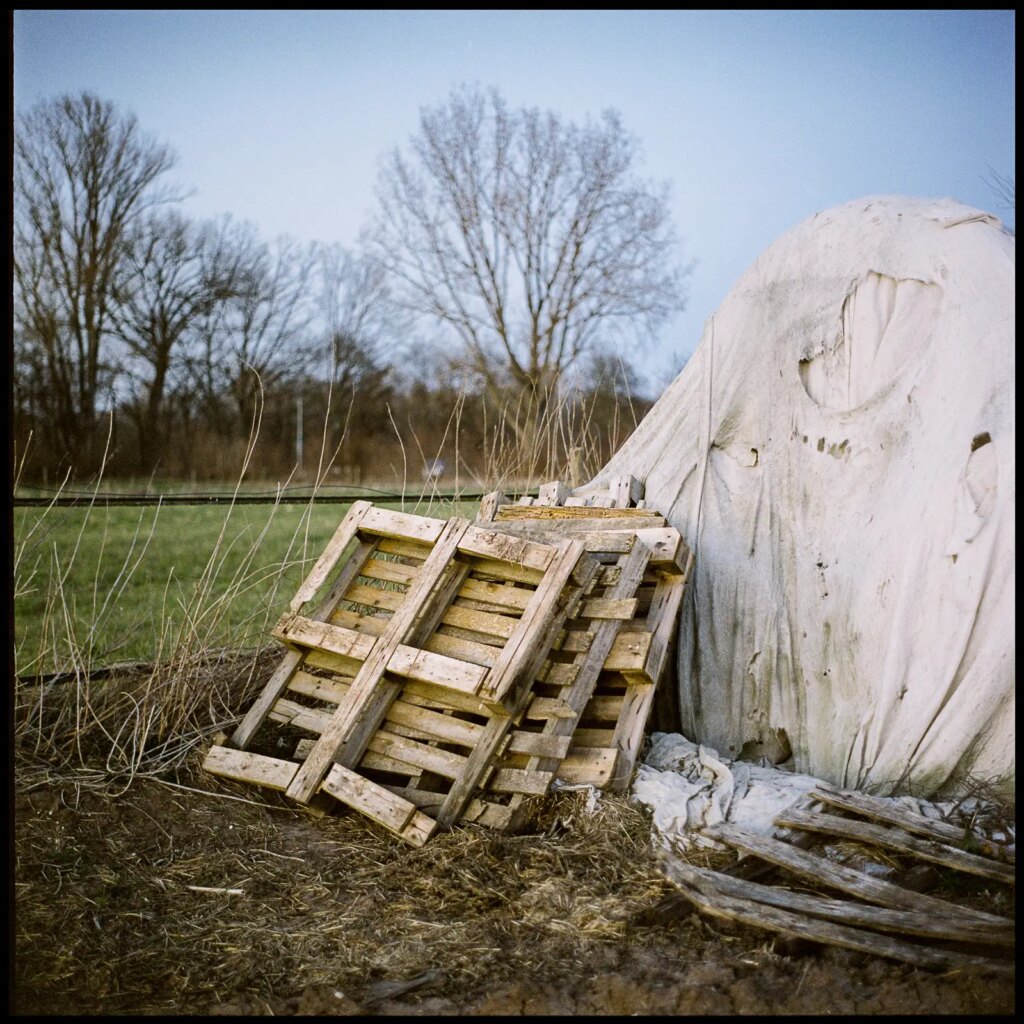
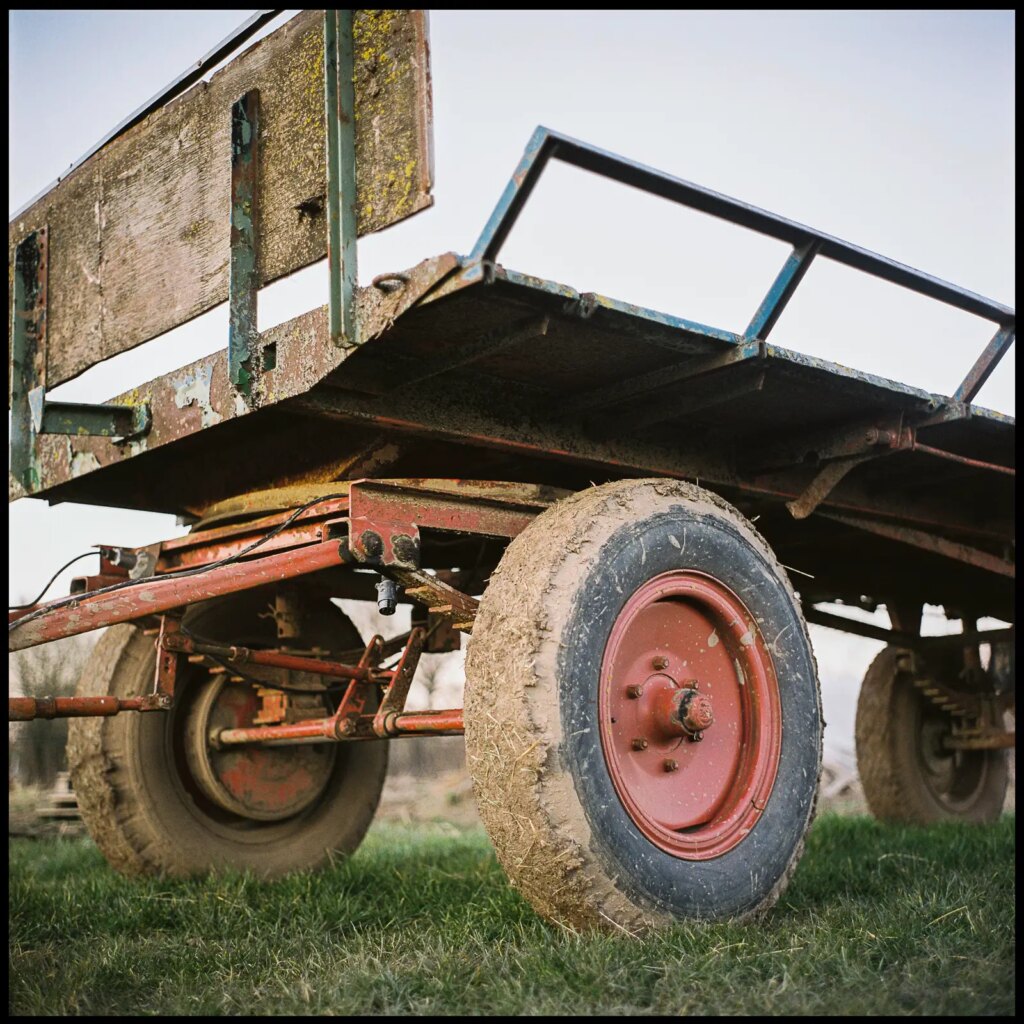
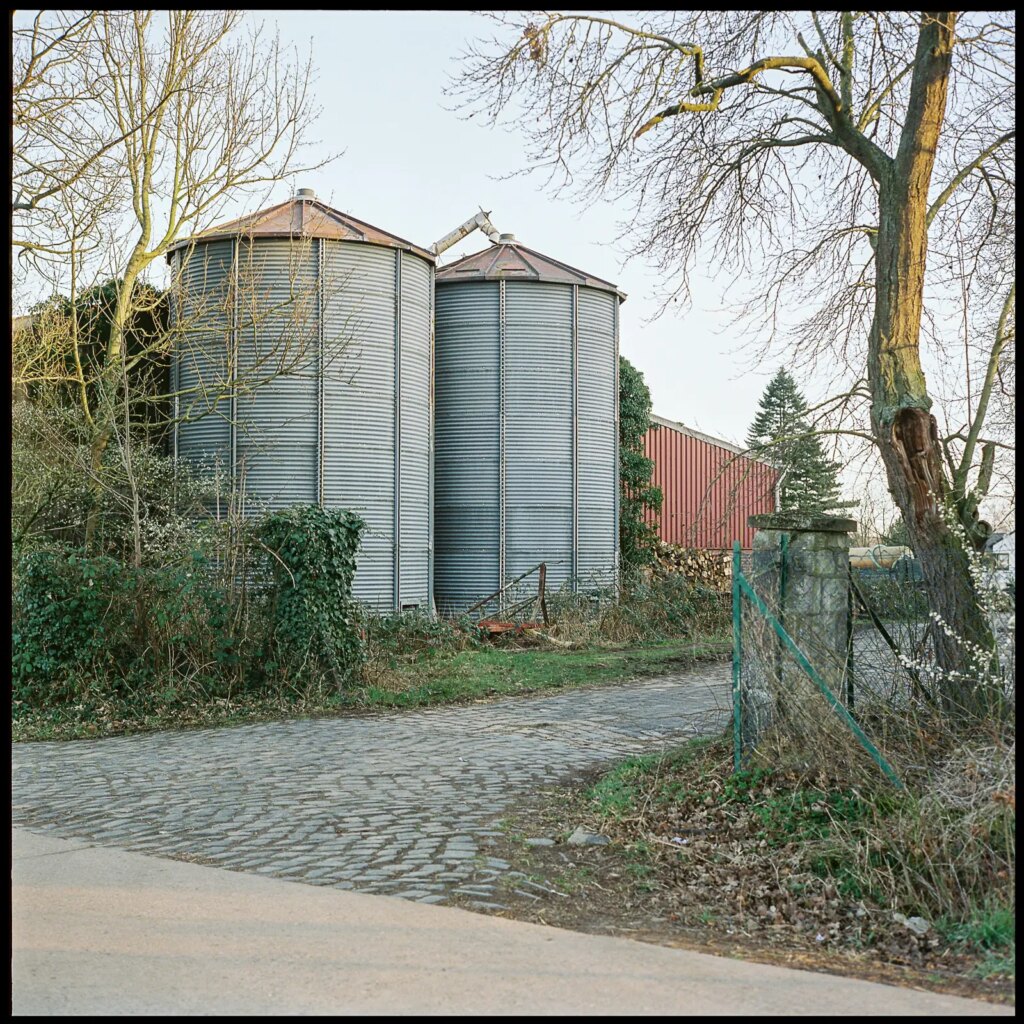
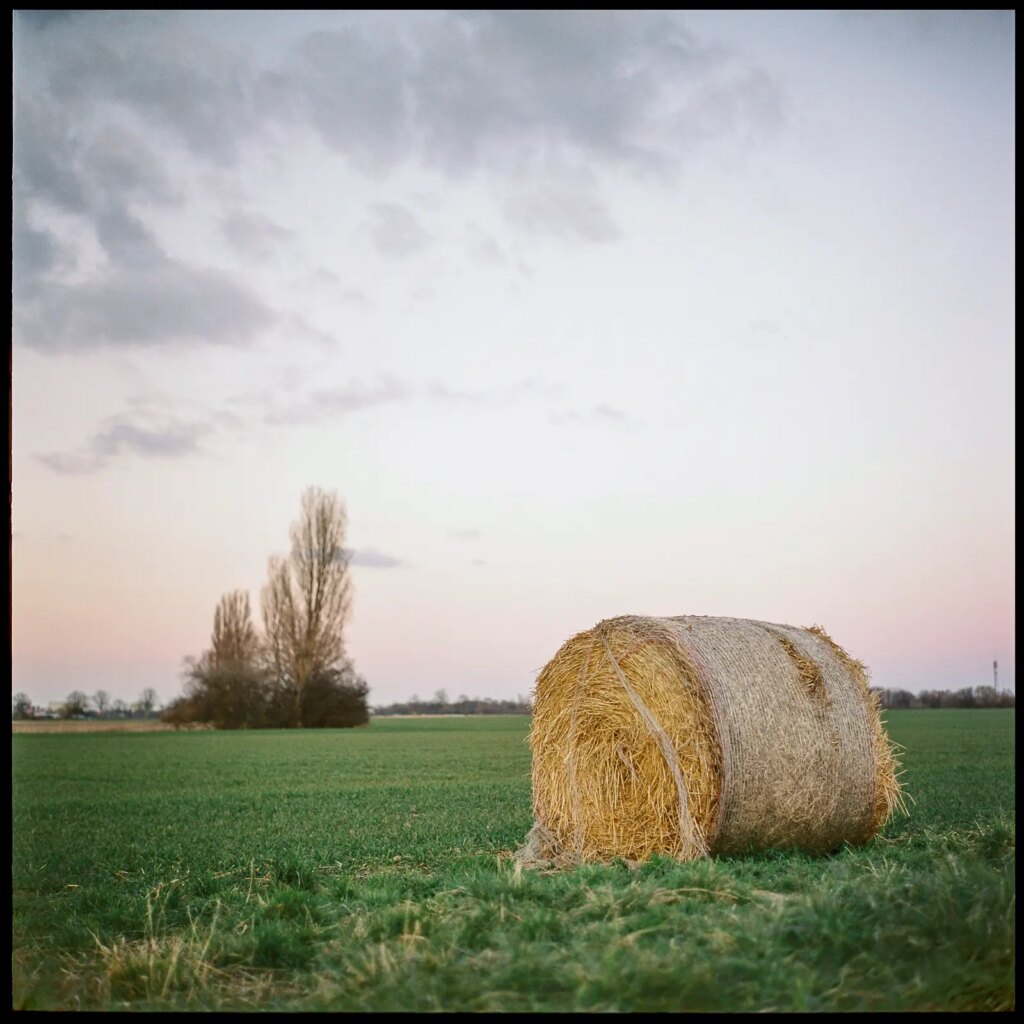
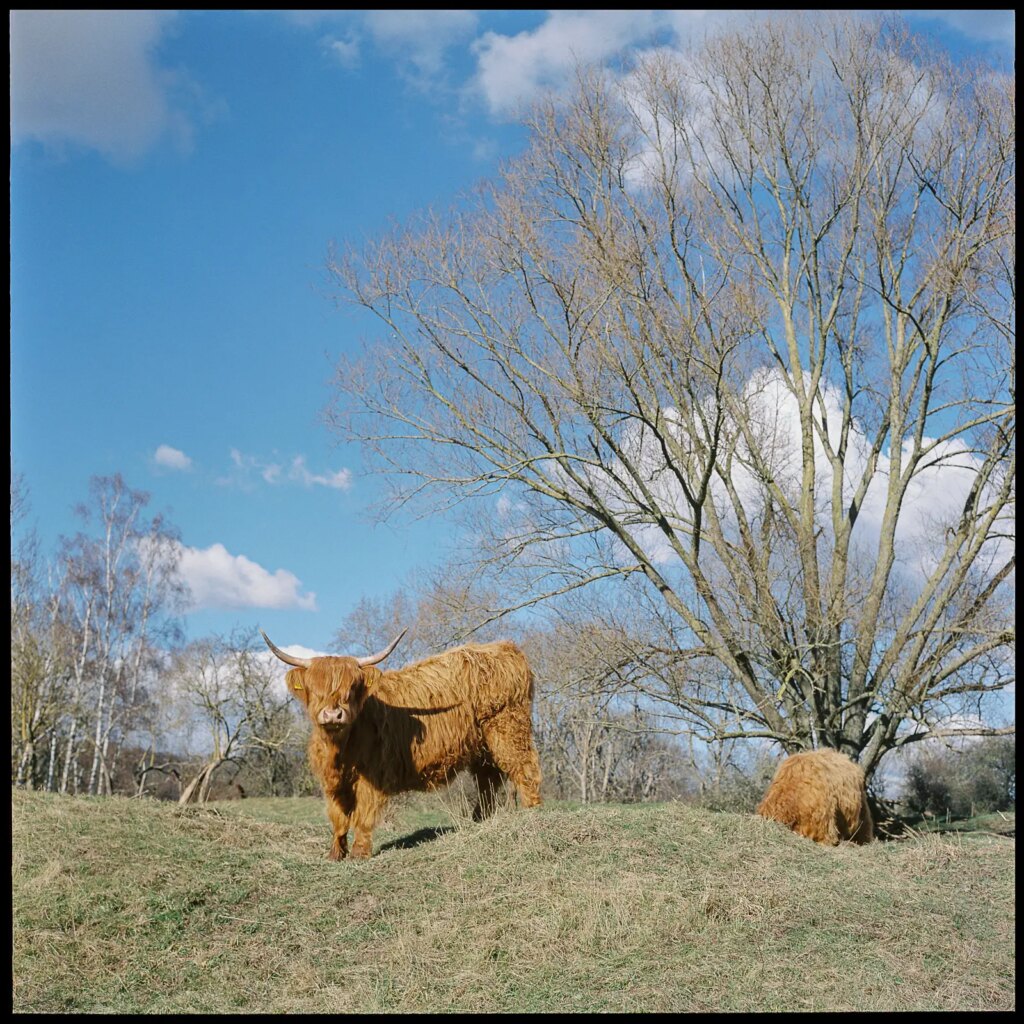
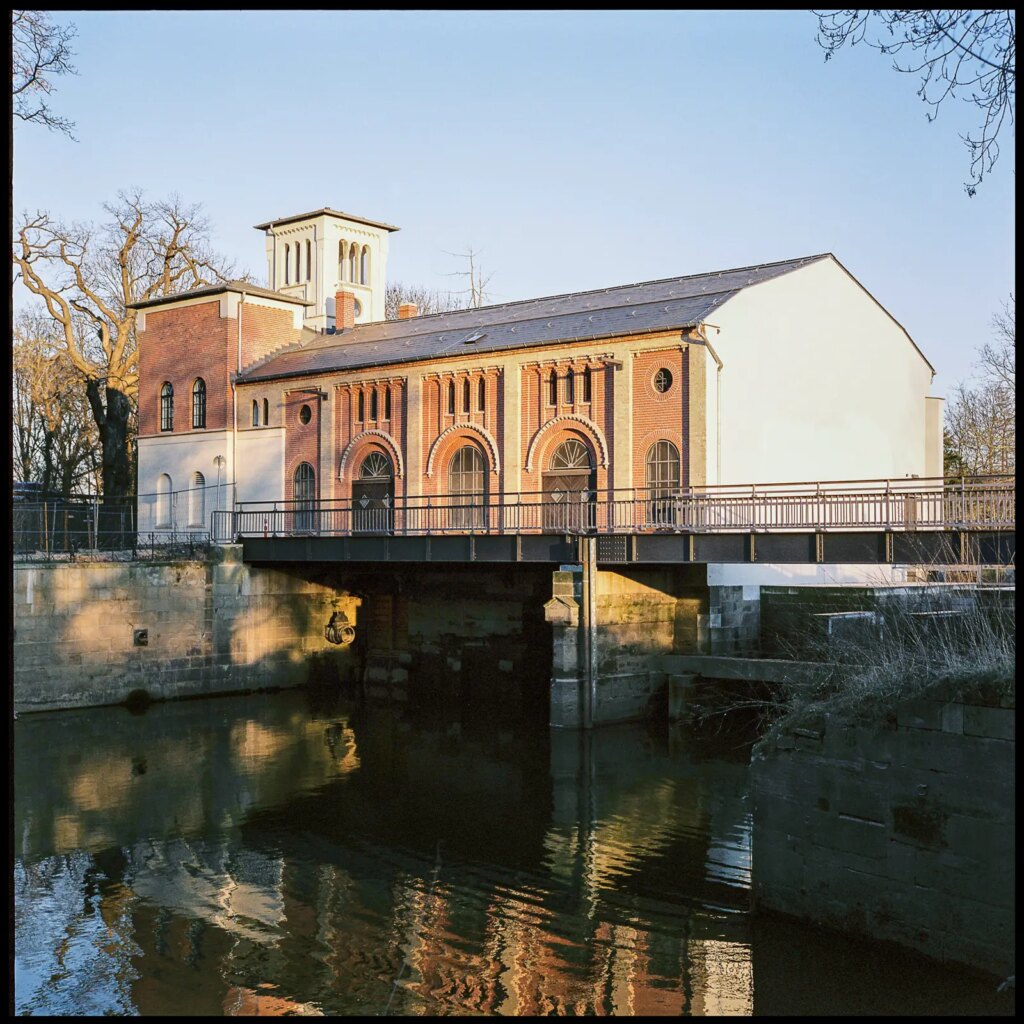
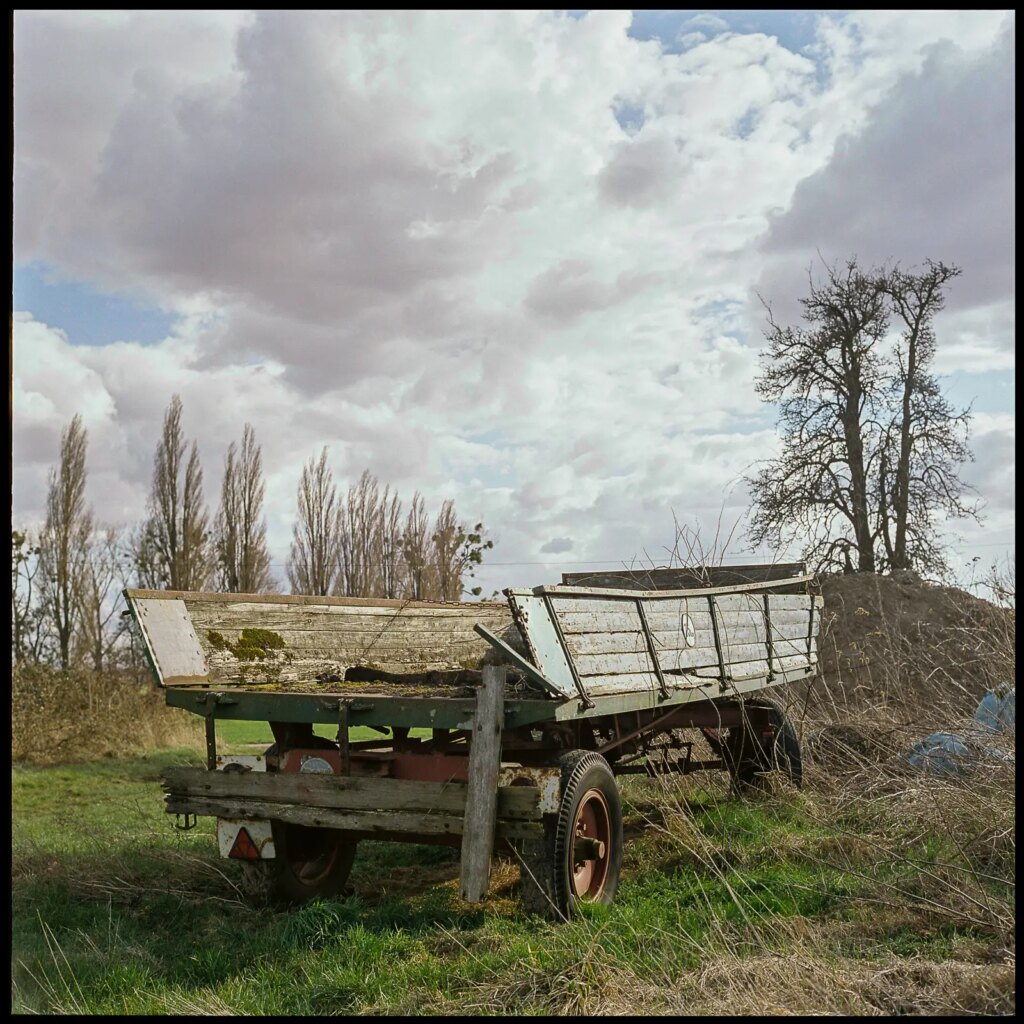
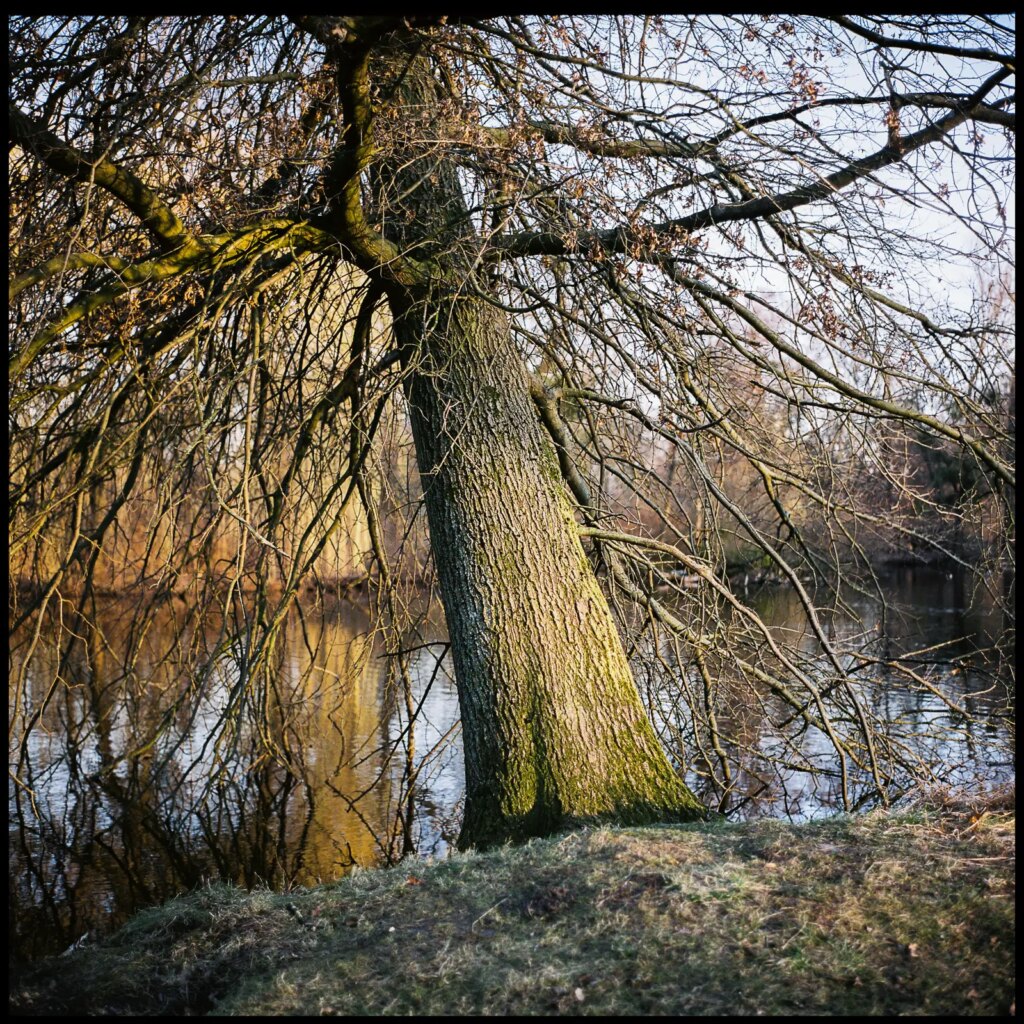
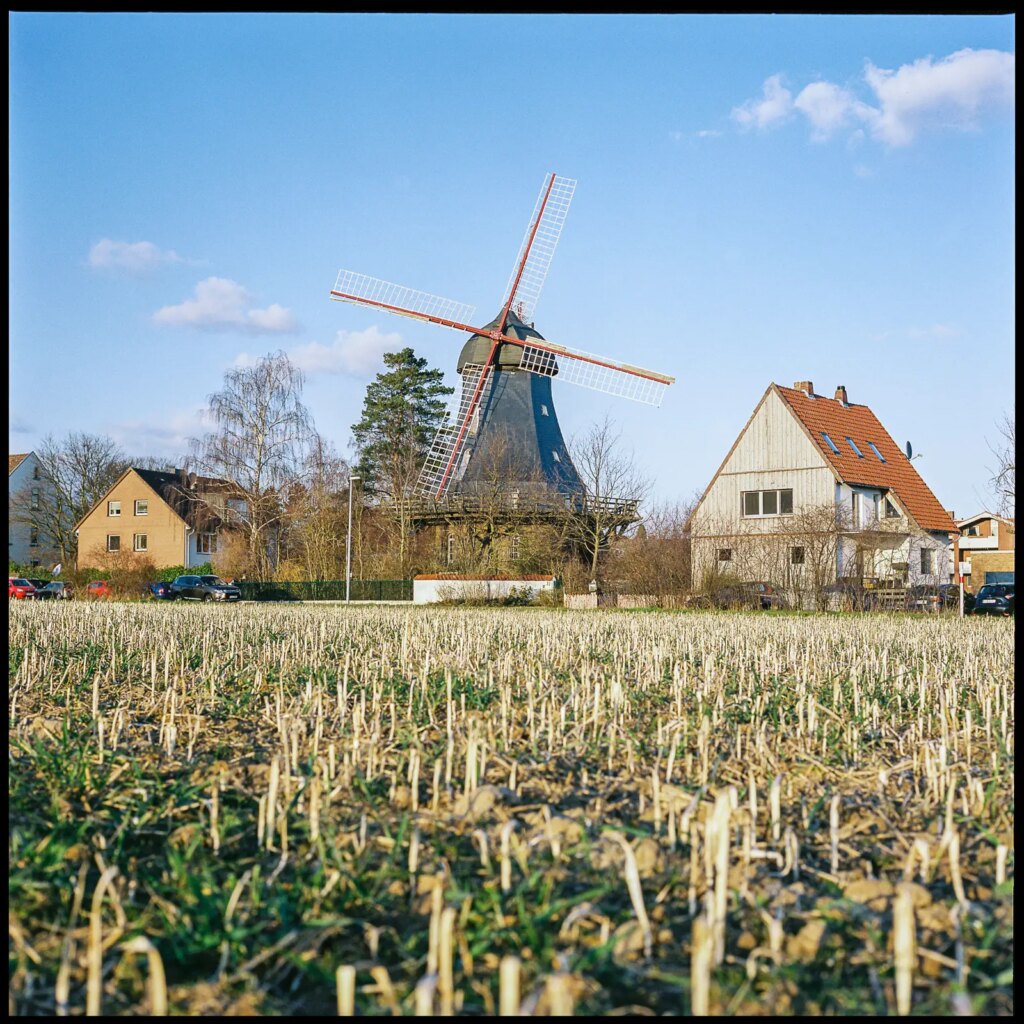
Final Thoughts on my Painting Landscapes Project
As usual with me working on a project, I don’t reach a defined end point – and I’m not eager to set one. I rather continue with it until I’m slowly running out of inspiration. A soft fading out instead of a clear cut. As I’m writing these lines, there is a lot more to come – for instance, I’m looking forward to summer landscapes with yellow wheat fields and dark-green oak trees.
Specifically, I want to experiment more with dramatic couldscapes. These had been an important facet for the Dutch Masters of landscape painting: look how often they depicted rugged mountains of clouds or the gloomy wall of an approaching thunderstorm! My image of the derelict trailer standing in the grass could give you a foretaste in this regard.
Thank you for reading – I hope you’ll now pick up your camera and “paint” some landscapes yourself!
Share this post:
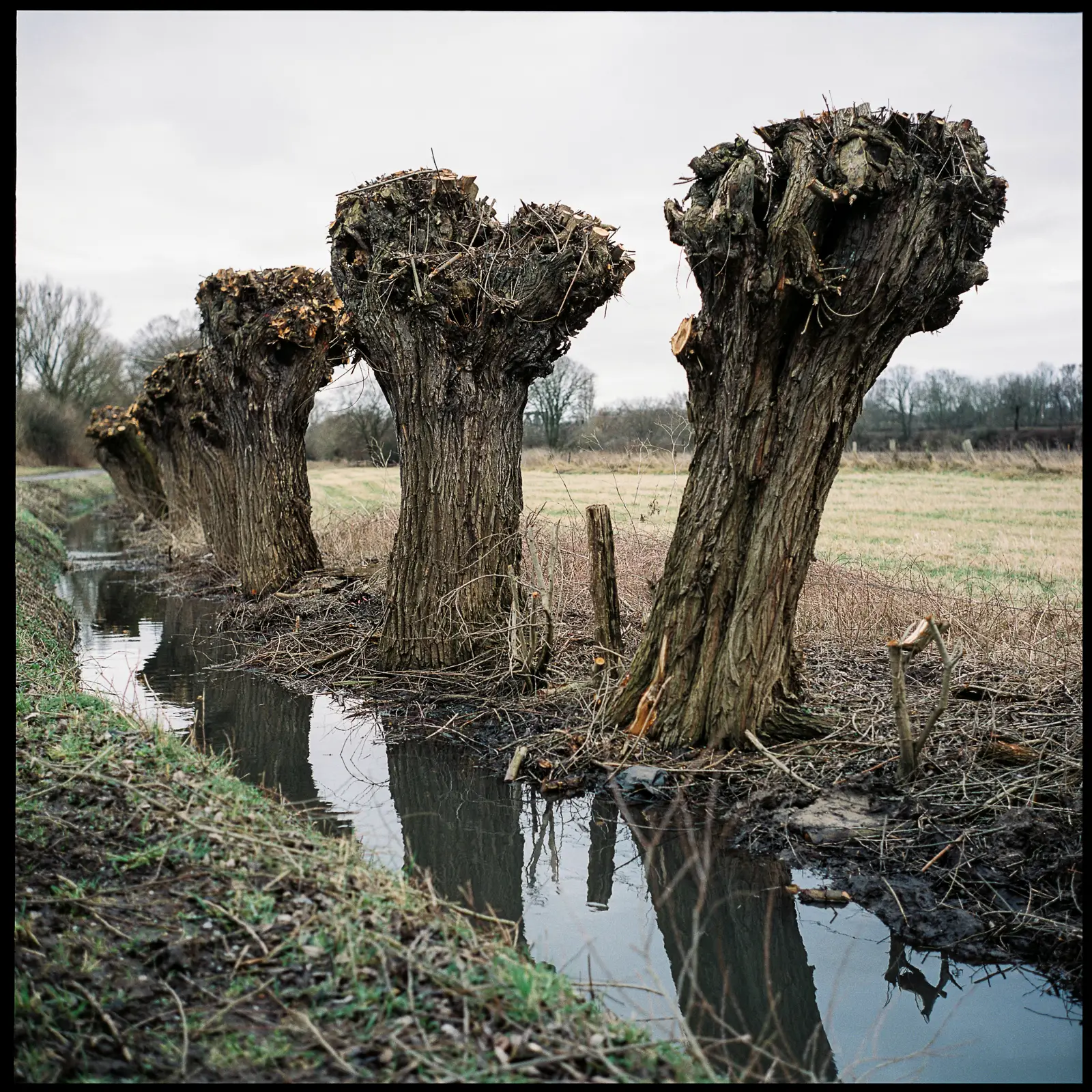








Comments
thorsten on Painting Landscapes with my Rolleiflex – by Christian Schroeder
Comment posted: 28/04/2022
Comment posted: 28/04/2022
Yuze Chen on Painting Landscapes with my Rolleiflex – by Christian Schroeder
Comment posted: 28/04/2022
Comment posted: 28/04/2022
Comment posted: 28/04/2022
Comment posted: 28/04/2022
Jesse on Painting Landscapes with my Rolleiflex – by Christian Schroeder
Comment posted: 29/04/2022
Comment posted: 29/04/2022
Alan on Painting Landscapes with my Rolleiflex – by Christian Schroeder
Comment posted: 29/04/2022
Comment posted: 29/04/2022
Gary on Painting Landscapes with my Rolleiflex – by Christian Schroeder
Comment posted: 29/04/2022
Comment posted: 29/04/2022
Alexander Seidler on Painting Landscapes with my Rolleiflex – by Christian Schroeder
Comment posted: 30/04/2022
Comment posted: 30/04/2022
Jasper T Kauth on Painting Landscapes with my Rolleiflex – by Christian Schroeder
Comment posted: 30/04/2022
The photos are abslutely brilliant and your inspiration was - well, very inspiring ;-) I love those landscape paintings, Farmstead and Winter Landscape are among my favourites. I must say, your straw bale photos are just magnificent. They draw you in and don't let go. I also like how you used the depth of field so well to isolate your subjects.
What a wonderful project!
Comment posted: 30/04/2022
Jay Dann Walker in Melbourne on Painting Landscapes with my Rolleiflex – by Christian Schroeder
Comment posted: 01/05/2022
I have always thought of my Rollei as a painter's tool. You prove me right.
As I too have found, using expired film can produce many pleasing surprises. Colors like pastels. Deep details in shadows. Flashy highlights. But mostly amazements in the mid-tones. Not always, but often. Unfortunately, expired film nowadays sells for more than new stock, at least on that (I won't name it) big internet sale site.
Photography with a Rolleiflex/cord (or for that matter any TLR) is reflective, almost Zen practice.
I will now go over to your website, and browse at more of your most excellent imagery.
Many thanks for a wonderful article!!
From Dann in Melbourne, Australia
Comment posted: 01/05/2022
Stephen Procter on Painting Landscapes with my Rolleiflex – by Christian Schroeder
Comment posted: 03/05/2022
Inward disposition, the predominance of knowing over willing, can produce this state under any circumstances. This is shown by those admirable Dutch artists who directed this purely objective perception to the most insignificant objects, and established a lasting monument of their objectivity and spiritual peace in their pictures of still life, which the aesthetic beholder does not look on without emotion; for they present to him the peaceful, still, frame of mind of the artist, free from will, which was needed to contemplate such insignificant thing so objectively[…] In the same spirit, landscape-painters, and particularly Ruisdael, have often painted insignificant country scenes, which produce the same effect even more agreeably.
Comment posted: 03/05/2022
jason gold on Painting Landscapes with my Rolleiflex – by Christian Schroeder
Comment posted: 20/06/2022
I hate outdated colour film as it is not consistent in results! Taking time to Go there, Expose and time needed, processing and finally, hopefully some photoshop, minimal but necessary to get less than good images! Yours are nice, but 75mm lenses will not have large out of focus backgrounds. Your moving to Spain means long rides on your bike!
Your images (once scanned it IS now digital) are in my opinion too light! Everybody writes me, i show too dark! So maybe my opinion only!
I love the square, the difficulty of lateral reverse and the short rolls.. The Rollei for me is a "Tree" camera. Almost landscape. The jump in quality is a real bonus! My Rollei leaves fancy lenses and marques in the dust.
Your results are stellar! Bravo. (if my comments are seen as too negative, don't show!)